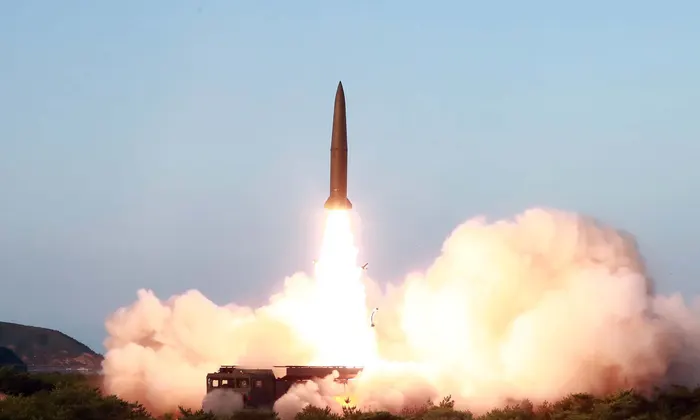North Korea fired an intercontinental ballistic missile (ICBM) off its east coast on Wednesday, prompting U.S, and leaders of South Korea and Japan who met on the sidelines of a NATO summit.
The missile flew for 74 minutes to an altitude of 6,000 km (3,728 miles) and range of 1,000 km, Japan’s chief cabinet secretary Hirokazu Matsuno said, in what would be the longest ever flight time for a North Korean missile.
Experts say that the latest test could be part of the North’s efforts to save face and retake the initiative after a failed launch of its first-ever spy satellite in May.
The launch came after heated complaints from North Korea in recent days, accusing American spy planes of violating airspace in its economic zones, condemning a recent visit to South Korea by an American nuclear-powered cruise missile submarine, and promising to take steps in reaction.
The White House condemned the launch and said it would take all necessary measures to ensure its security and that of South Korea and Japan.
The door has not closed on diplomacy, but Pyongyang must immediately cease its destabilizing actions and instead choose diplomatic engagement,” White House National Security Council spokesperson Adam Hodge said in a statement.
South Korean President, Yoon Suk Yeol, in Lithuania for the NATO summit, convened an emergency national security council meeting and vowed to use the summit to call for strong international solidarity to confront such threats.
Yoon and Japanese Prime Minister Fumio Kishida held separate talks and strongly condemned the launch as a grave violation of multiple U.N. resolutions and a serious provocation that escalates tension.
Kishida said the launch threatened peace and stability in the region and beyond, and required closer cooperation between the two neighbours and with the United States.
Yoon, at an earlier meeting with Japan, Australia and New Zealand, said: “We cannot condone these provocations, and we must respond to North Korea’s reckless actions through strong responses and solidarity of the international community.”
The top military generals of the United States, Japan and South Korea gathered for a rare trilateral meeting in Hawaii just before the missile launch.
Japan said the missile landed in the sea east of the Korean peninsula and about 250 km (155 miles) west of northern Japan’s Okushiri Island.
In April, North Korea test fired its first ever solid-fuel ICBM, one of around a dozen missile tests this year and Kim Dong-yup, a professor at the University of North Korean Studies in Seoul, said the latest launch could have been a second test of the solid-fuel Hwasong-18 ICBM.
Analysts believe the North’s ICBMs can fly far enough to strike targets anywhere in the United States, and that the nuclear-armed country likely has developed nuclear warheads that can fit on its missiles.
(Reuters)

